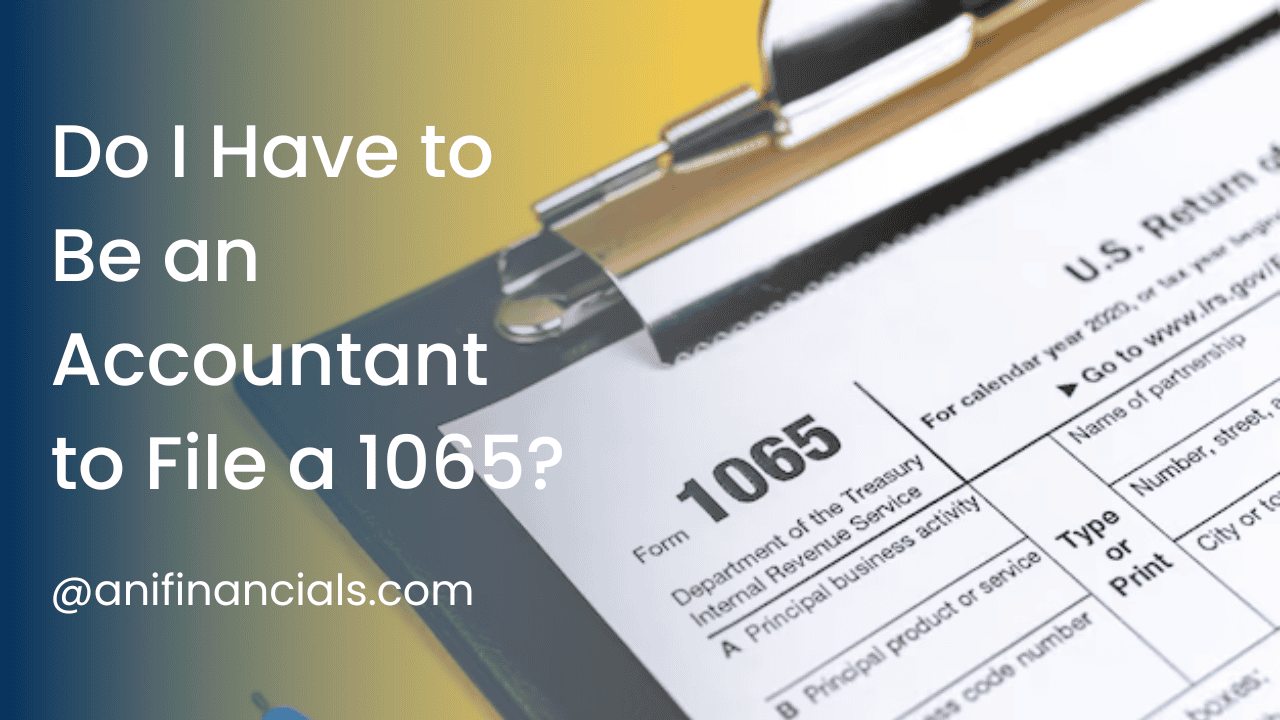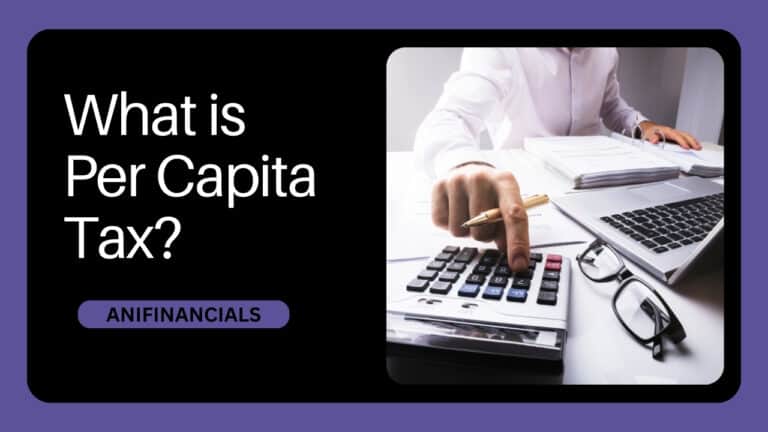Do I Have to Be an Accountant to File a 1065?
So, you’re thinking about filing a Form 1065, but you’re not an accountant. You’re wondering if that’s a problem. Well, the short answer is no, you don’t have to be an accountant to file a 1065. But hold on, it’s not quite that simple. Let’s dive into the nitty-gritty of what filing a Form 1065 entails and why having some know-how or assistance can make the process smoother.
Introduction
Filing taxes can be a daunting task, especially if you’re running a partnership and need to file a Form 1065. This form is crucial for partnerships to report their income, deductions, and other financial details to the IRS. But do you really need to be an accountant to tackle this? Let’s explore the ins and outs of Form 1065, understand the entities involved, and see how you can manage without being a certified number-cruncher.
What is Form 1065?
Form 1065, U.S. Return of Partnership Income, is used to report the income, gains, losses, deductions, and credits of a partnership. It’s essential for the IRS to determine each partner’s share of the partnership’s income, which is reported on Schedule K-1. This form must be filed annually by partnerships, including General Partnerships, Limited Partnerships (LP), Limited Liability Partnerships (LLP), and Limited Liability Companies (LLC).
Understanding Partnerships and Form 1065
Types of Partnerships
- General Partnership: All partners share management and liabilities.
- Limited Partnership (LP): Includes both general and limited partners, where limited partners have restricted liability.
- Limited Liability Partnership (LLP): All partners have limited liabilities, protecting them from the debts of the partnership.
- Limited Liability Company (LLC): Treated as a partnership for tax purposes but offers limited liability to all members.
Key Elements of Form 1065
- Partnership Agreement: Defines how the partnership operates and the distribution of profits and losses.
- Principal Business Activity: The main type of business conducted by the partnership.
- Employer Identification Number (EIN): A unique number assigned to the partnership by the IRS.
- Total Assets: The total value of everything the partnership owns.
- Profit and Loss Statement: Summarizes revenues, costs, and expenses during a specific period.
- Balance Sheet: Provides a snapshot of the partnership’s financial condition at a given point in time.
- Schedule K-1: Reports each partner’s share of the partnership’s income, deductions, credits, etc.
Filing Form 1065: The Basics
Do I Have to Be an Accountant?
You don’t have to be an accountant to file a 1065, but it helps to have a solid understanding of financial statements and tax regulations. The form itself isn’t overly complicated, but it requires attention to detail and accuracy. Here’s a breakdown of what you’ll need to do:
- Gather Financial Information: You need details about the partnership’s income, deductions, and other financial activities.
- Complete the Form: Fill out Form 1065 with all required information, including sections like income, deductions, and analysis of net income.
- Attach Schedules: Attach Schedule K-1 for each partner, detailing their share of the partnership’s income and other financial information.
- File on Time: The due date is March 15 for calendar year partnerships, or the 15th day of the third month after the end of the partnership’s tax year.
Using Professional Tax Software
Professional tax software can simplify the process. It guides you through each step, ensuring you don’t miss any critical details. Many small businesses use software to handle their tax forms because it’s user-friendly and cost-effective.
Detailed Steps to File Form 1065
Step 1: Gather Required Information
- Business Name and Address
- EIN
- Principal Product or Service
- Total Assets
- Income and Deductions: Include business income, guaranteed payments, other income, and various deductions like operating expenses and depreciation.
Step 2: Complete the Form
- Income Section: Report all forms of income including business income and other income.
- Deductions Section: List all deductible expenses, including salaries, rents, and taxes.
- Net Income: Calculate the net income by subtracting deductions from income.
- Guaranteed Payments: Payments made to partners regardless of the partnership’s income.
- Capital Gains and Losses: Include any gains or losses from the sale of assets.
Step 3: Attach Schedules
- Schedule K-1: Each partner receives a Schedule K-1 detailing their distributive share of the partnership’s income, deductions, credits, etc.
- Schedule M-1: Reconciles income (loss) per books with income (loss) per return.
- Schedule M-2: Analysis of partners’ capital accounts.
- Schedule L: Balance sheets per books.
Step 4: File the Form
- Due Date: March 15 for calendar year partnerships.
- Extensions: File IRS Form 7004 for an automatic extension of time to file.
Common Challenges and Solutions
Recordkeeping Requirements
Keeping accurate records is essential. This includes all financial transactions, receipts, and documents related to income and deductions. Good recordkeeping helps ensure you don’t miss any important details when filing Form 1065.
Understanding Tax Regulations
Tax laws can be complex and change frequently. It’s essential to stay updated with current regulations. Resources like IRS instructions and tax advisors can be invaluable.
E-filing Requirements
E-filing is mandatory for most partnerships. It’s faster and more efficient, reducing the chance of errors. Make sure to use approved e-filing software.
The Role of a Tax Professional
While you don’t need to be an accountant, having a tax professional can be beneficial. They can help navigate complex tax laws, ensure compliance, and potentially save you money through effective tax planning strategies.
Tax Advisor/Consultant
A tax advisor can provide personalized advice tailored to your partnership’s specific needs. They can help with:
- Tax Planning Strategies: Developing strategies to minimize tax liability.
- Compliance: Ensuring all filings are accurate and submitted on time.
- Audit Support: Providing assistance if your partnership is audited by the IRS.
Professional Tax Software
Using professional tax software can simplify the process and help ensure accuracy. These programs are designed to guide you through each step, from entering financial data to filing the completed form.
Important Considerations
Penalties and Interest
Filing late or inaccurately can result in penalties and interest. Ensure you meet all deadlines and provide accurate information to avoid these issues.
Estimated Tax Payments
Partnerships may need to make estimated tax payments throughout the year. This helps avoid large tax bills and potential penalties at the end of the tax year.
Local and State Requirements
In addition to federal requirements, partnerships must comply with local and state tax regulations. Make sure to check the specific requirements for your location.
Conclusion
Filing Form 1065 doesn’t require you to be an accountant, but it does demand a good grasp of financial and tax concepts. By understanding the process, utilizing professional tax software, and possibly seeking help from a tax professional, you can confidently handle the filing. Remember, the key is accurate and timely reporting, which ensures compliance and helps your partnership avoid any unnecessary complications.
In summary, while you don’t need to be an accountant to file a 1065, having some knowledge or seeking professional assistance can make the process much smoother and less stressful. Stay organized, keep up with tax laws, and don’t hesitate to seek help if needed. Your partnership’s financial health depends on it!







